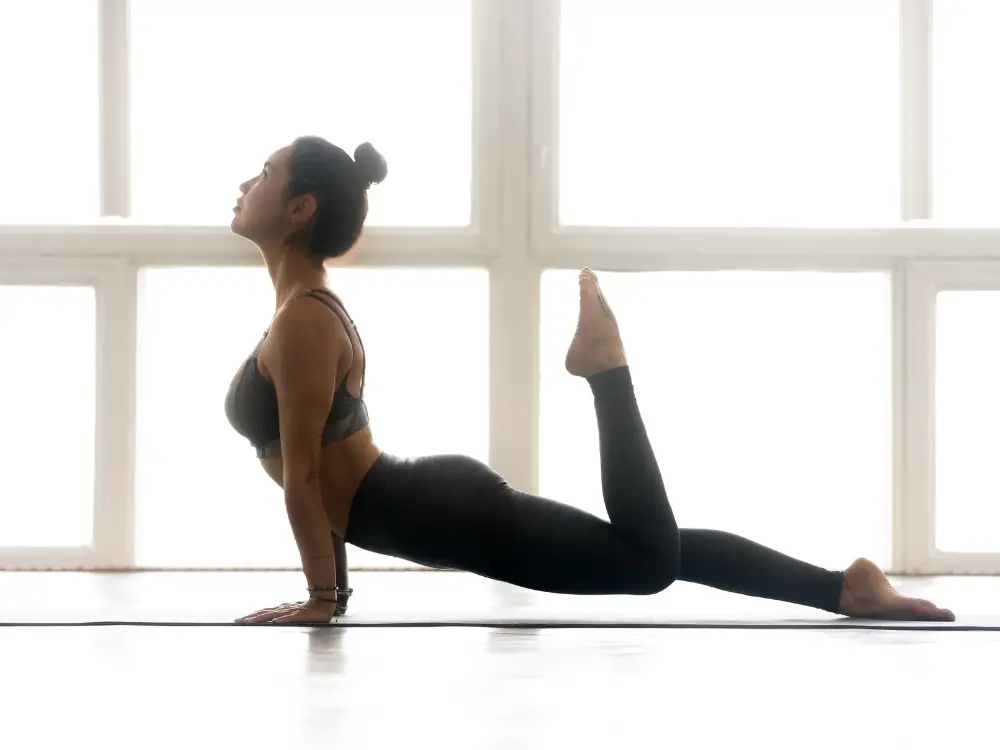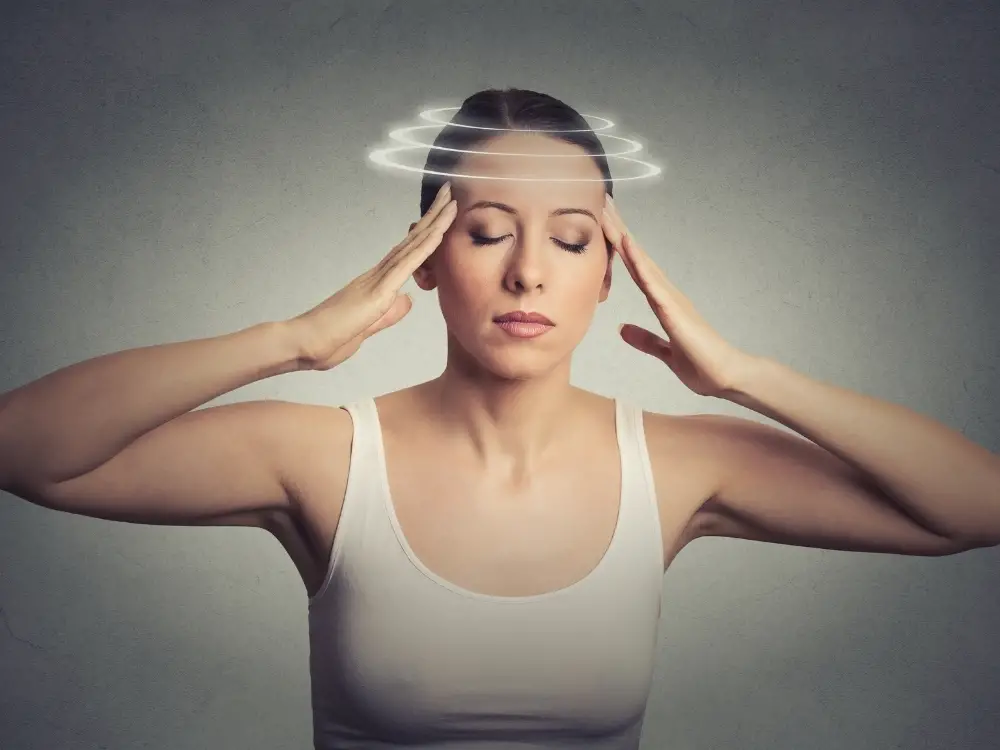Suffering from vertigo may reduce the quality of your life and you may be thinking that exercising will only make it worse.
Keep in mind that vertigo is often a symptom, not a condition by itself, so you should consult a to get professional opinion to exclude any serious conditions.
Pilates and Vertigo go well together, and practicing can even help with this condition, if your doctor allows it. To stay safe and prevent falling, you have to slowly change positions and take care when getting up. Experienced instructors can help you.
Proper diet and change of lifestyle can also help to reduce Vertigo and benefit your general health. Practicing Pilates is and additional benefit.
If you are having second thoughts and you are unsure about should you exercise or not, and whether this type of activity can help, I will try to share some info about it.
I will tell you more about Pilates and Vertigo, and share a few specific exercises that should be avoided if possible.
Can You Do Pilates With Vertigo?
Let’s define vertigo first. It is a condition that manifests in a way that the affected person had a dizzy and lightheaded feeling. It seems that everything around you is spinning, and you can easily lose balance. It can happen slowly or suddenly, and there are no triggers for it. It just appears, at least in the majority of cases. Dizziness, on the other hand, has specific triggers.
Some activities can be dangerous if suffering from vertigo (like rock climbing or gymnastics), but other forms physical exercise can help. Pilates and Vertigo go well together because Pilates is done on a mat, movement is slow and controlled, and if you have serious vertigo problems, you can practice without having to stand on your feet. Risk of falling down or getting injured is almost non-existent.
I would advise you to practice in a studio where you will be supervised by a certified instructor. You also have to share as much info as possible about your condition with the instructor. Avoid exercising alone at home to minimize the risk of injuries.
Is Pilates Good for Vertigo?
Can exercise cause Vertigo or not is a common question, and I will answer it in the next chapter. First, I want to tell you that you can and should practice Pilates to possibly reduce Vertigo problems.
This condition (if the doctor ruled out any serious problems) can be caused by many factors. One of the common ones is bad circulation. Exercise increases your heart rate, increases your oxygen intake and distribution in tissues and cells, and has a long-term beneficial effect on your cardiovascular system.
Regular exercise, even mild one, can increase your lung capacity and help you with oxygen absorption.
Another common reason for vertigo is nerves. Stretching, gaining flexibility, as well as balance can help a lot with that.
While practicing focus on your breathing. Breath has to match the movement, especially slow and controlled movement.
And you know how I mentioned healthy diet too? Exercising speeds up your metabolism too. As you can see, there are many reasons why Pilates is good for Vertigo.

Can Pilates Exercise Cause Vertigo?
So, can Pilates cause Vertigo and do you need to worry that your practice will turn into a disaster? As I already mentioned, dizziness and Vertigo are not the same. Dizziness can be caused by many factors, including exercise. I assume that many of you had at least one situation where you felt a bit dizzy after a long and hard practice after suddenly standing up. However, that should not be confused with Vertigo.
Vertigo can show up suddenly and disappear in a few seconds, or it can last much longer. Every individual who suffers from it experiences it differently. It can be mild and barely noticeable, or it can be so severe that you are unable to stand on your feet. Some will even feel nausea.
Besides bad circulation and nerve problems, it can be caused by inner ear problems (vestibular system that is in charge of our balance), or even migraines.
Your doctor should help you determine the cause of your problem. If the problem is connected to your head movement and vestibular system, then yes, certain positions can trigger vertigo. However, if the problem is with nerves, blood circulation, or any other mentioned conditions, Pilates will not trigger it.
Pilates Reformer and Vertigo: Is this Good for You?
Pilates reformer and Vertigo are actually a good combination. There are dozens of exercises you can do on a reformer that don’t require you to change poses between sitting and standing up or bending down and getting up. If those are avoided, you eliminate any chance of falling or triggering certain vertigo cases.
Reformer ads resistance to movement and increases muscle activation. All of that can bring mentioned benefits faster. Reformer exercises, when compared with mat exercises without props, can increase your heart rate more.
If you are suffering from vertigo that can be triggered by motion, you should avoid exercises where you are inverted. Also, make an exercise plan that doesn’t require standing up before the end of the practice. You can workout on your feet, but those exercises should be done first.
Another benefit of a reformer is that the platform is above ground, so it is much easier to get on it and get up after the practice, unlike mats, where you have to get up from the floor. You can first sit on the edge of the reformer with your feet on the ground, rest a bit, and slowly get up while holding the frame for extra support if necessary.
What Pilates [And Other] Exercises Should You Avoid With Vertigo?
Exercising with vertigo has many benefits, but you have to be aware of some limitations. Experienced instructors will know how to perfectly tailor your personalized exercise plan.
Exercises to avoid with vertigo are all exercises that have the following similarities:
• Getting up suddenly
• Bending down and getting up
• Inversions
• Excessive head movement (both in horizontal and vertical plane)
Some examples of these exercise are:
Rollovers – abs exercise where you are laying on your back and lift your legs all over your head almost to touch the floor behind you.
Sit ups – standard sit ups where you lay down and lift your torso to a sitting position, especially if done fast, is considered excessive head movement in a vertical plane.
Squats and Hip Hinges – deep squats from which you stand up, especially fast, are considered excessive head movement in a vertical plane. If your Vertigo is caused by inner ear problems, this may trigger it. Hip Hinges are even worse as they require bending forward and standing up.

Alternatives to given exercises:
Rollover >>> Corkscrew – lay down on your back and lift your legs straight up. Lower them down to about 45 degrees and back up in a circular motion.
Sit ups >>> Plank and side-plank – plank is a stationary exercise that is extremely efficient and does not require movement. It is even better for you as it activates all core muscles, not just the abs.
Squats/Hip Hinges >>> Leg kick back/Side Leg Lifts – These exercises may not activate exactly the same groups of muscles, but they do activate same parts of your body. Instead of squats do leg kick back. Stand on all fours on your mat. Make sure that your arms are supporting you and are stable. Lift your leg up (bended or straight) to activate your gluteus and upper leg muscles. For side leg lift lay on your side in a straight line. Support your head with your hand. Inhale while moving your leg up and exhale while lowering down.
Conclusion
Suffering from vertigo can limit you in some things, but exercising should not be one of them. Physical activity can actually help relieve the symptoms.
Pilates and Vertigo are a good combination because you have the ability to perform only those exercises that will not trigger your condition.
Make sure that you inform your instructor about it and always practice under supervision to avoid any problems. Avoid all movement that doesn’t feel right, and after some time, you will see the improvement!

